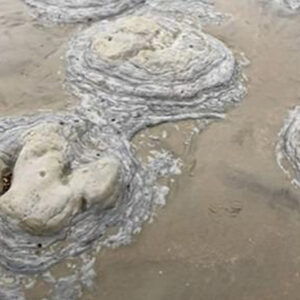
A recent discovery of golden artifacts and human remains in Panama has unveiled insights into a pre-Columbian society, distinct from the Mayans, yet equally intriguing.
Unearthed at the El Caño archaeological site, the findings from the ninth excavated tomb shed light on a mysterious religious leader.
Dating back to 750 to 800 CE, the bomb belonged to a man around 40 years old, now affectionately dubbed The Lord of Flutes due to the presence of several animal bone flutes within the burial site.
Buried face-down atop a woman, a practice seldom seen in the region, archaeologists determined he was a religious leader as he was “buried with flutes and bells and not, as in the case of other lords found at the same site, with axes, spears, and objects made with teeth of large predators.”
Dr. Julia Mayo, the excavation’s leader and the director of the El Caño Foundation, told CNN in an email, “This calls attention to the importance of religion in this society. After the death of these people, (it was believed that) a constant communication was established between the ancestor and his descendants.”
Bedecked in gold, the Lord of Flutes evidently held a position of great authority within his society, as indicated by the numerous artifacts found alongside him.
Among the treasures discovered were five golden pectoral ornaments, two belts made entirely of golden beads, four bracelets, and eight earrings, two of which were shaped like human figures, one like a double crocodile, and five made of gold-plated sperm whale teeth. Additionally, there was a necklace of small circular beads, a set of circular gold plates, and two bells.
The presence of golden pieces resembling those found in Colombia’s Quimbaya region suggests long-distance trade connections, hinting at the extensive networks this ancient society might have had.
El Caño, known as both a religious center and necropolis, has yielded a wealth of information about the burial practices of this society. Human sacrifices were often made upon the death of important individuals, with some of the higher-ranking graves containing between 8 and 32 bodies.
An intriguing aspect of the recent discovery is the positioning of the bodies within the tomb. While it’s common for bodies to be buried face down, it’s unusual to find on placed face down atop another, a practice previously observed only at another archaeological site called Sitio Sierra.
The woman buried alongside the Lord of Flutes likely had a significant social relationship with him, though there’s no clear evidence of marriage. This suggests complex social dynamics within the society.
What are your thoughts? Please comment below and share this news!
True Activist / Report a typo


